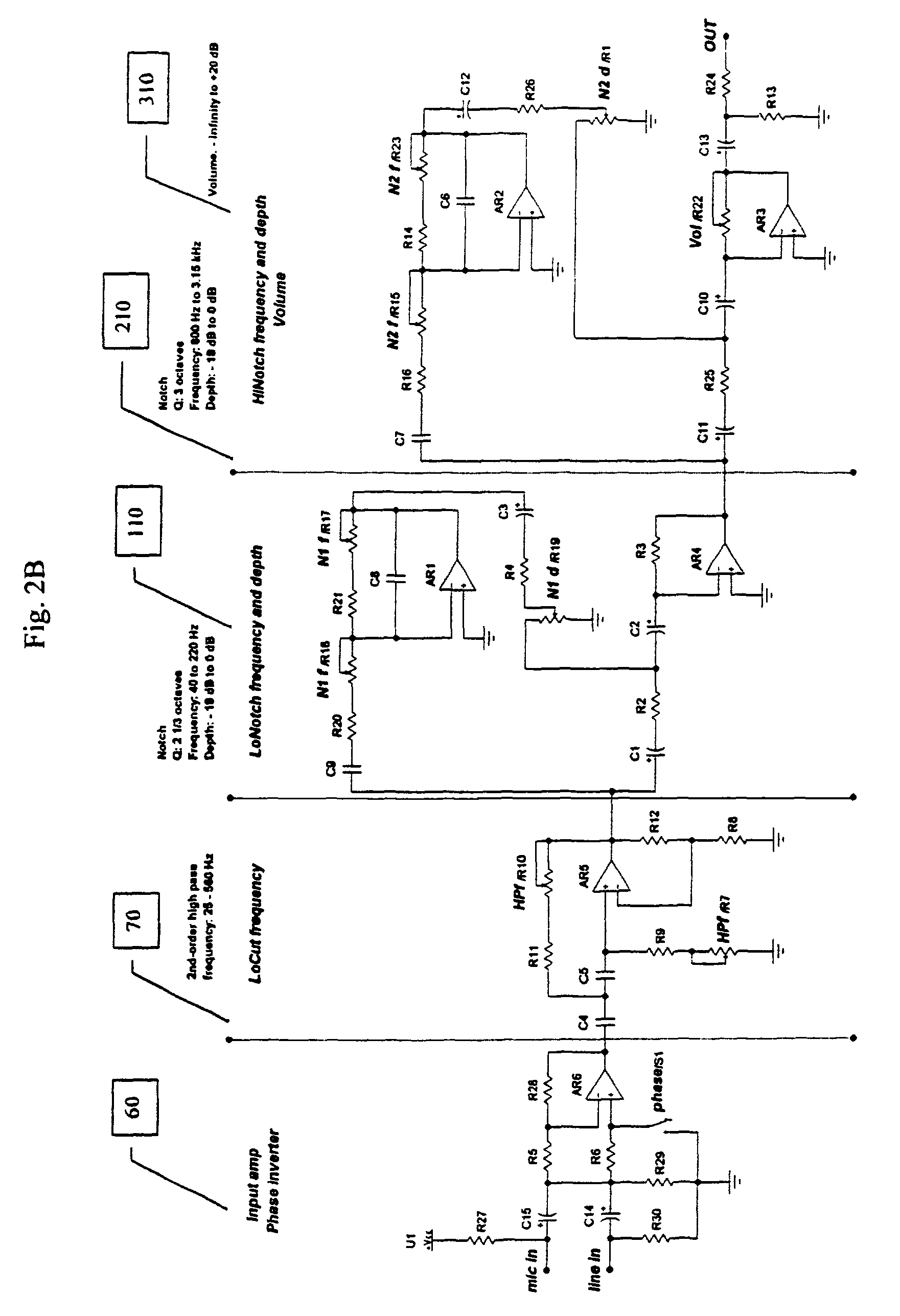Microphone-tailored equalizing system
a technology of equalizing system and microphone, which is applied in the direction of combination control, gain control, frequency response correction, etc., can solve the problem that each filter control can be limited to the smallest useful range, and achieve the effect of reducing the acoustic feedback of the amplification system, large effect on the sound of the instrument, and changing the tonal balance of the instrumen
- Summary
- Abstract
- Description
- Claims
- Application Information
AI Technical Summary
Benefits of technology
Problems solved by technology
Method used
Image
Examples
Embodiment Construction
[0067]According to the present invention, the microphone assembly includes a microphone such as an omnidirectional or unidirectional microphone element, such as a Model No. DPA 4060 microphone manufactured by Bruel and Kjaer. The microphone element can be attached to a clip or housing to permit for temporarily attaching the microphone assembly to a pre-selected spot on or in an acoustic musical instrument. Other temporary attachment arrangements may be provided when necessary. The clips or other attachment devices are selected to minimize mass loading of the instrument structure to which the microphone is attached. In some cases, permanent attachment of the microphone assembly to a specific musical instrument by suitable means may be acceptable. Alternatively, the microphone can be placed proximately to the musical instrument rather than being attached to the musical instrument.
[0068]Referring to FIG. 1, a general block diagram of an equalizer system is shown constructed according t...
PUM
 Login to View More
Login to View More Abstract
Description
Claims
Application Information
 Login to View More
Login to View More - R&D
- Intellectual Property
- Life Sciences
- Materials
- Tech Scout
- Unparalleled Data Quality
- Higher Quality Content
- 60% Fewer Hallucinations
Browse by: Latest US Patents, China's latest patents, Technical Efficacy Thesaurus, Application Domain, Technology Topic, Popular Technical Reports.
© 2025 PatSnap. All rights reserved.Legal|Privacy policy|Modern Slavery Act Transparency Statement|Sitemap|About US| Contact US: help@patsnap.com



